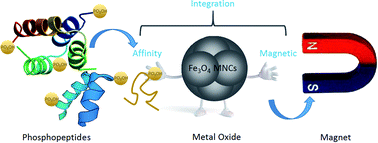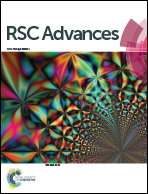Low-cost iron oxide magnetic nanoclusters affinity probe for the enrichment of endogenous phosphopeptides in human saliva†
Abstract
The reversible phosphorylation of proteins plays a key role in numerous biological processes, while abnormal phosphorylation is a cause or consequence of many human diseases. Selective enrichment and MALDI-TOF MS or MS/MS characterization and identification of endogenous phosphopeptides fished-out from human saliva sample were achieved using simple and low-cost iron oxide magnetic nanoclusters (Fe3O4 MNCs) affinity probe in this work. The physicochemical properties of the prepared MNCs material was characterized by SEM, TEM, XRD, EDS, SQUID, etc. Based on their merits of high affinity, rapid separation, good biocompatibility, excellent dispersibility and superior specificity for capturing phosphopeptides, the performances of Fe3O4 MNCs were assessed by selectively and efficiently isolating phosphopeptides from standard phosphoprotein and actual non-fat milk tryptic digests, and intricate human saliva, respectively. Moreover, we demonstrated that the probe can be applied for rapid and effective purification and enrichment of phosphoproteins. The Fe3O4 MNCs affinity probe, which possesses the merits of integration of solid Lewis acids function and magnetic property, together with the “double economical” (both time and money) synthesis strategy, should be a promising material for the large scale investigation of endogenous phosphoproteomics.


 Please wait while we load your content...
Please wait while we load your content...